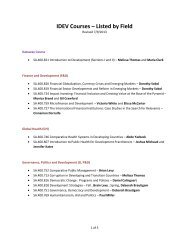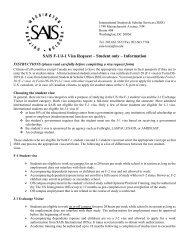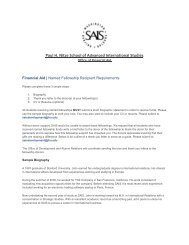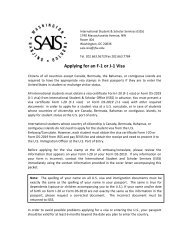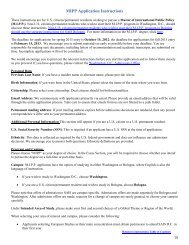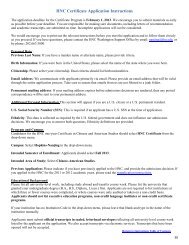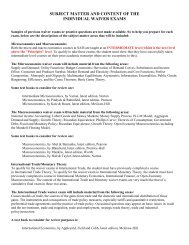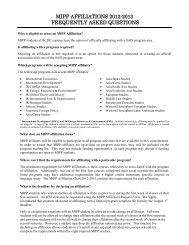Tunisia: Understanding Conflict 2012 - Johns Hopkins School of ...
Tunisia: Understanding Conflict 2012 - Johns Hopkins School of ...
Tunisia: Understanding Conflict 2012 - Johns Hopkins School of ...
Create successful ePaper yourself
Turn your PDF publications into a flip-book with our unique Google optimized e-Paper software.
Addressing Unemployment<br />
Rebekah Chang<br />
Through his self-immolation on 17 December 2010, Mohamed Bouazizi became an<br />
important catalyst for <strong>Tunisia</strong>’s recent “Jasmine Revolution.” His economic struggles<br />
took on symbolic value and became the trigger for the protests in Sidi Bouzid, where the<br />
unemployment rate was around 30%. Economic grievances, with unemployment at the<br />
forefront, were at the heart <strong>of</strong> the revolution and remain a pressing issue today. Lowering<br />
unemployment is crucial for the success <strong>of</strong> this revolution and should be addressed with<br />
greater urgency according to the recommendations that follow below.<br />
Background<br />
The Middle East and North Africa (MENA) region witnessed strong economic growth<br />
from the early 2000s, with a GDP growth rate that ranged from 4% to 6% through 2008.<br />
After two years <strong>of</strong> slower growth due to the global financial crisis, the region again<br />
recorded a high GDP growth rate <strong>of</strong> 4.5% in 2010. However, this was not accompanied<br />
by a similar rise in the employment growth rate, which remained between 2% and 4%<br />
throughout the 2000s. This has translated into an unemployment rate that ranges from<br />
15% to 30% for the countries in this region, by far the highest in the world. <strong>Tunisia</strong> is<br />
not an exception. While witnessing real GDP growth levels around 5% between 2003<br />
and 2008, the unemployment rate stayed around 13% during this time. In 2010, at the<br />
start <strong>of</strong> the Jasmine Revolution, the unemployment rate was 14.2%. However, due to<br />
ongoing instability in the country since the revolution, the unemployment rate is currently<br />
around 18%. In some towns bordering Algeria, it is estimated that unemployment is as<br />
high as 50%.<br />
Further analysis reveals that the entry <strong>of</strong> more women into the labor force and the<br />
rapid growth <strong>of</strong> the youth population are the primary causes <strong>of</strong> high unemployment.<br />
Women have made substantial gains in labor force participation since the 1950s due to<br />
changing social norms and greater access to education. The youth unemployment rate, at<br />
30%, is almost double the general unemployment rate. The prospects for university<br />
175



